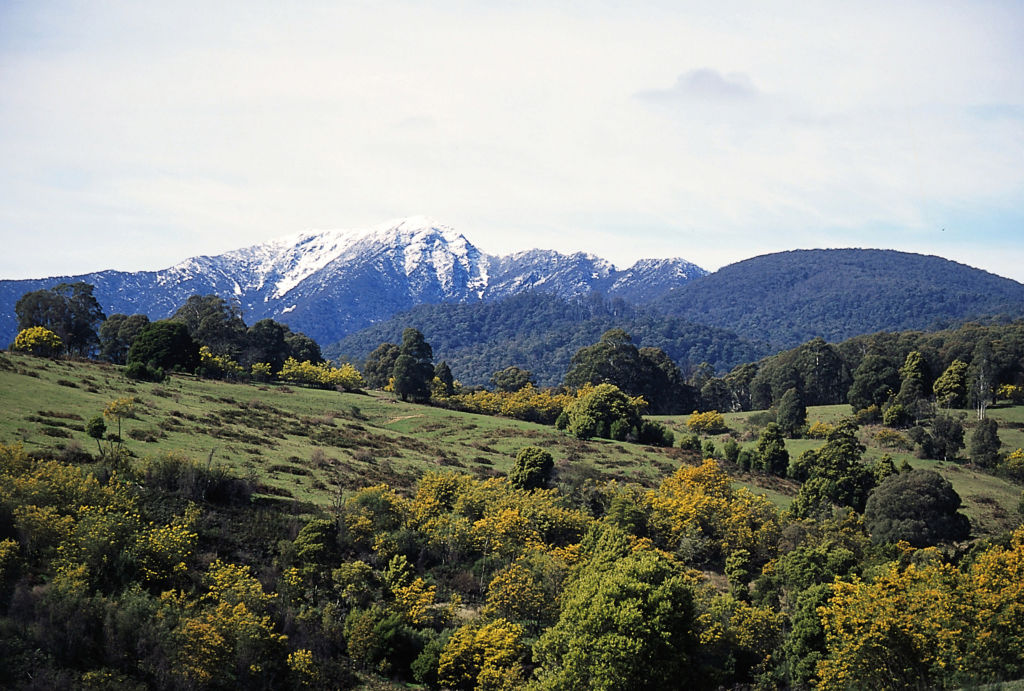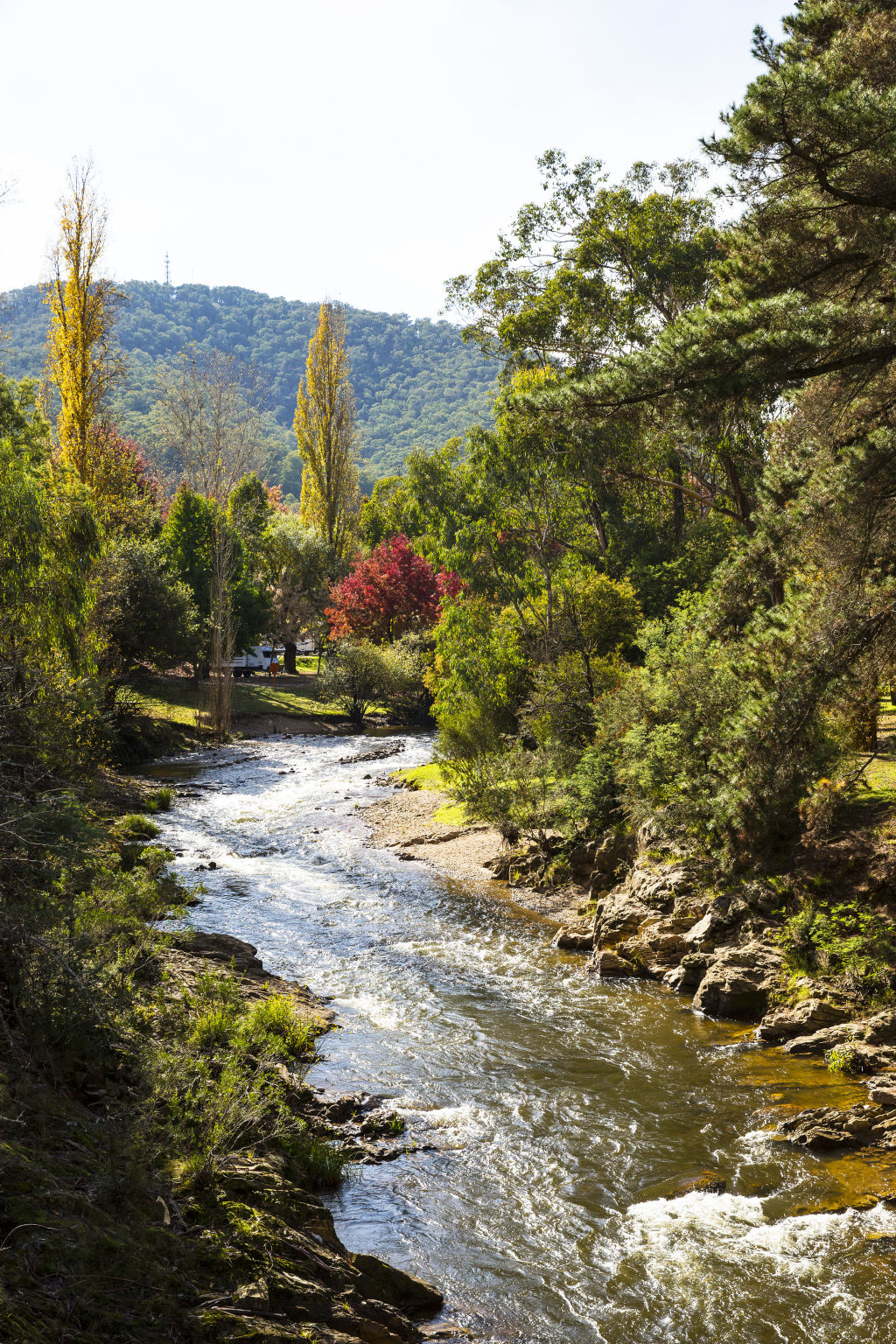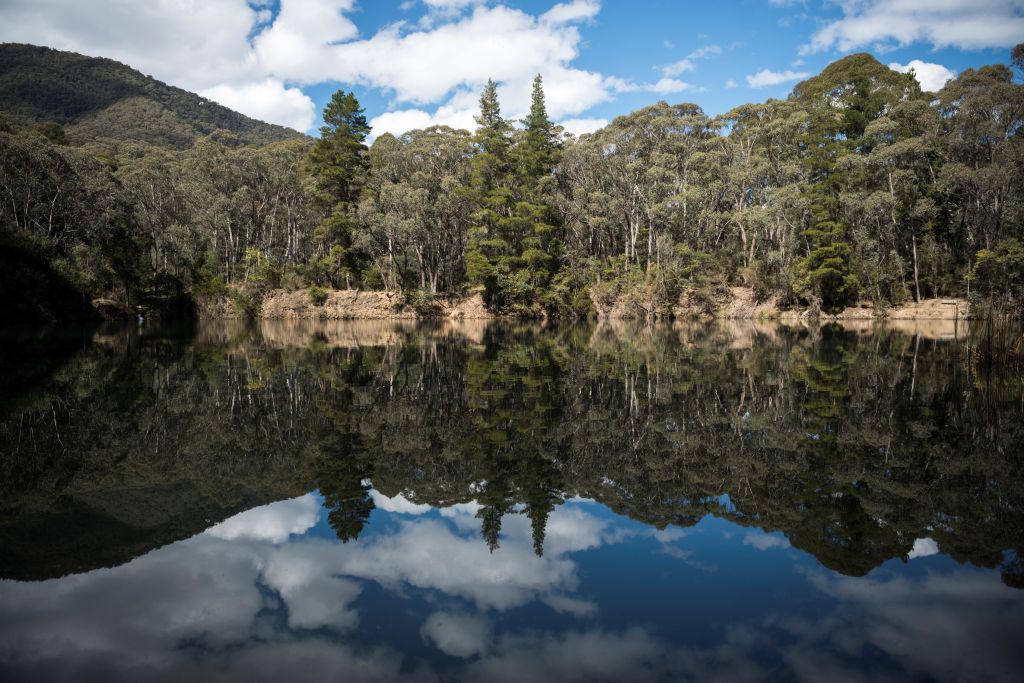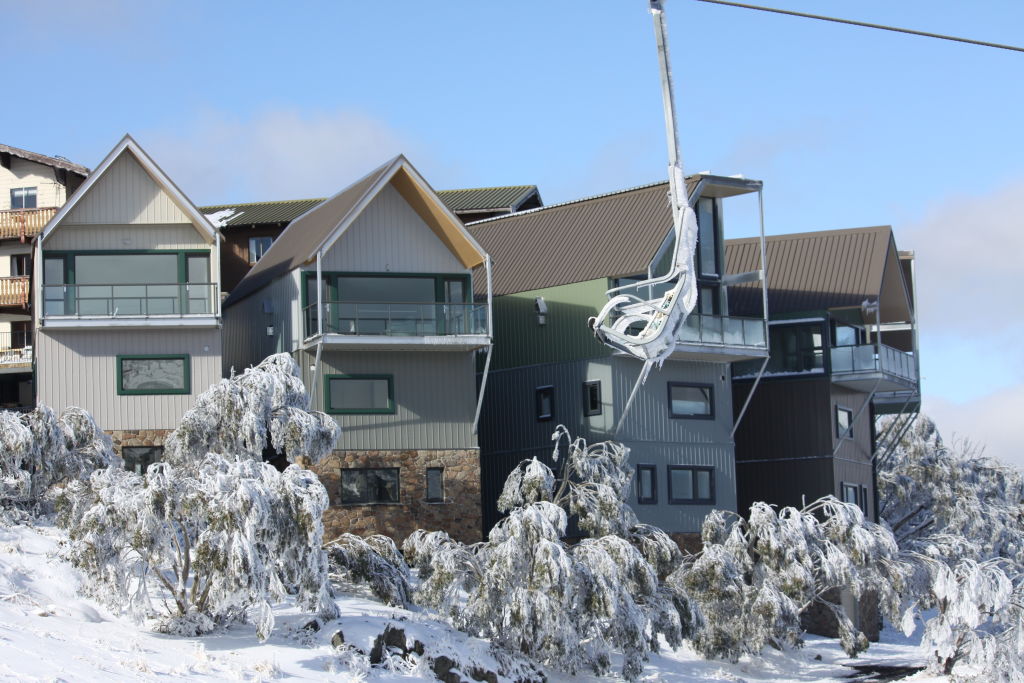Six towns in Victoria's Alpine region to visit to support bushfire recovery

The romance of cattlemen country has inspired poetry, books and cinema. Whether visitors choose hiking or gourmet trails, breathtaking landscape is guaranteed.
Winter draws adrenaline junkies to snow-tipped peaks, and the warmer months are also a glorious time to holiday here, be it for pulse-racing outdoor adventuring or relaxing, scenic strolls.
The high country is where epic bush folklore was written and attracts sports lovers, but foodies and families will find just as much to write home about.
Tourism operators, impacted by the state of disaster declared in January, are once again welcoming business, with open doors and arms.
Mansfield
Distance: 210 kilometres north-east of Melbourne, 514 kilometres south-west of Canberra, 730 kilometres south-west of Sydney
Renowned for: Horses and history

Want some Mansfield inspiration? Try revisiting the classic 1982 movie The Man From Snowy River.
Mansfield was not afflicted directly by flames but has felt the fallout of summer’s bushfires. The gateway to the high country, this atmospheric town makes the perfect base for exploring the alpine areas of the north-east, including Craig’s Hut.
The rugged bark cattlemen’s hut perched seemingly on top of the world was built for The Man From Snowy River but has become a tourist attraction in its own right.
The drive to the hut takes around 90 minutes from Mansfield.
“A lot of people book longer treks at this time of year so the fire danger had a big impact on us,” says Laura Hayes, who runs Hidden Trails by Horseback. “People booked on our trail rides in late February and March have been calling to see if it’s safe. We’re just getting the message out that it’s fine and it’s still beautiful … it’s looking fantastic out there.”
Things are quiet at Mansfield’s atmospheric Delatite Hotel. The beer garden should be jumping but occupancy is at a disturbing low, manager Tiffany Henwood says, despite the firefront not coming near the town. “People have been cautious, which is a good thing, but now it’s time to come back,” she says.
“The rivers are still amazingly beautiful; you can go fishing, mountain biking, four-wheel-driving. It really is God’s playground when it comes to outdoor activities.”
Bright
Distance: 655 kilometres south-west of Sydney, 439 kilometres south-west of Canberra, 323 kilometres north-east of Melbourne
Renowned for: Autumn leaves and sporting events

Bright deserves a place in the dictionary alongside the definition of “picturesque”. In the Ovens Valley, it’s the prettiest of towns no matter what the season. It is estimated the area suffered a $90 million blow in January due to the fire threat.
“What will make a real difference is people coming back,” Alpine Shire Council CEO Charlie Bird says.
The Bright Autumn Festival from April 24 to May 3 celebrates the harvest over 10 days and the third Saturday of every month is devoted to the Make It, Bake It, Grow It Market, on the banks of the Ovens River, with more than 70 stalls of local produce.
The Murray to the Mountains Rail Trail is an easy six kilometre ride from Bright to Porepunkah – or a more vigorous 62 kilometres to Beechworth – with shops hiring out bikes in town.
There are wineries galore to explore, and it’s also a place with no shortage of cafes to get your caffeine fix, thanks to the likes of Sixpence Coffee – a roastery, cafe and brew bar which shares its central Bright space with Reed & Co. Distillery, makers of local botanical-inspired Remedy Gin.
“Bright certainly does good events,” Sixpence owner Luke Dudley says. “We’ve got the Mountain Bike Nationals in mid-March and other things trickling along. We took a hit, but we’ve got everything we started with so we’re lucky.”
Harrietville
Distance: 345 kilometres north-east of Melbourne, 461 kilometres south-west of Canberra, 676 kilometres south-east of Sydney
Renowned for: Beautiful scenery and outdoor pursuits

Be careful when visiting Harrietville; you might find yourself planning to move there. That’s what happened to Verona Sullivan and her husband Bill in 1983 when stumbling upon this pretty little sub-alpine town at the foot of Mount Hotham.
“We just loved the pristine environment, the valley and the people,” says the former midwife who now runs Lavender Hue Farm, which includes B&B accommodation and a cafe serving Devonshire tea with lavender scones overlooking the river.
January was a cruel month but it also showed the beauty of community, with townspeople rallying around each other and their B&B guests offering to pay for their whole stay despite being evacuated early: “We couldn’t take their money but the kindness was amazing,” Sullivan says. “It’s a collective crisis but a collective humanity.”
The mountains around Harrietville escaped unscarred and things are slowly getting back to normal. Ross Larard, who took over the Harrietville Hotel Motel in midDecember, says conditions have been perfect: “Clear and lovely for a few weeks now.”
His move to the town was precipitated by two grown children who work as ski instructors at Mount Hotham during the winter.
“We brought them here 20 years ago when they were kids and fell in love with the place. Eventually it made sense to move here,” he says.
The ski season is an obvious drawcard but the warmer months have their own outdoor pleasures, including hiking tracks and fishing on the Ovens River.
And no trip to Harrietville is complete without a visit to the Harrietville Museum, which documents the town’s gold mining history, before grabbing a cone from Morries Ice-Creamery.
Falls Creek
Distance: 386 kilometres north-east of Melbourne, 457 kilometres south-west of Canberra, 672 kilometres south-west of Sydney
Renowned for: Mountain biking and serenity
Falls Creek is inevitably associated with winter, but if you’re thinking of a trip to Falls Creek, the time is now.
As Melbourne and Victoria’s low country swelters through summer, Falls Creek is typically 10 to 15 degrees cooler. That makes it ideal for adventure seekers of all stripes and explains why Falls has been gaining a reputation as an excellent summertime escape.
The Falls Creek Mountain Bike Park consists of 40 kilometres of world-renowned trails through the Victorian Alpine National Park.
“There’s so much to do, even apart from mountain biking,” says Angela Bell, general manager of the QT Hotel, which offers spacious rooms with balconies equipped with hot tubs in the Falls Creek Village.
“A major cohort of visitors we get are people from the city who just want to enjoy the peace and quiet.”
Local cafe Milch is an excellent village pit-stop. Owner Jaye Fatchen has an online business for her addictive brownies and caramel slices but visit the convivial cafe in person for a restorative menu of Thai green chicken curry and pan-fried salmon in tom yum broth, eaten in the crisp mountain air.
Dinner Plain
Distance: 388 kilometres north-east of Melbourne, 504 kilometres south-west of Canberra, 720 kilometres south-west of Sydney
Renowned for: Alpine trails and kicking back, chalet-style

Dinner Plain was about as lucky as it gets. The fire front came within 300 metres of the alpine village before a wind change. Mick Hubbard, owner of Dinner Plain’s Blizzard Brewery, was “white-knuckling” the scenes from the safety of Melbourne following the town’s evacuation.
“The village was in deep peril for a while, but it didn’t burn and it’s absolutely pristine and beautiful,” he says.
The only Australian brewery above the snowline, the Blizzard Brewery is part of the High Country Brewery Trail, a nine-strong group of breweries in Victoria’s north-east. Hubbard recommends signing up with tour operator Ingrained Culture to meet other hop-heads and take the stress out of deciding who drives.
“We all prove that beers and alpine country areas go hand in hand.”
Dinner Plain has reopened for business. Its network of alpine trails are perfect for exploring on mountain bike, foot or horse; the famous Razorback walk from nearby Mount Hotham to Mount Feathertop, Victoria’s second highest mountain, takes around four hours one way and passes through some incredible scenery. But if you want to stick closer to the village, there’s always frisbee golf.
“It’s just like golf, only played with a frisbee,” says Jack Hudson, manager at Ramada Resort. “It’s very popular in alpine towns like Whistler in Canada.” The nine-hole course winds around the front of the village, through a terrain of snow gums and wildflowers, and it’s free to play.
Hudson says another attraction of Dinner Plain is the native wildlife. “You might see wallabies, wombats, kangaroos and alpine emus.”
Mitta Mitta
Distance: 632 kilometres south-west of Sydney, 417 kilometres south-west of Canberra, 398 kilometres north-east of Melbourne
Renowned for: Dartmouth Dam and spectacular scenery
Mitta Mitta, population 171, isn’t a town with which everyone is familiar, but it’s certainly worth getting to know.
This former gold town on the Omeo Highway is tucked at the end of the Mitta Valley, a swathe of green and rolling hills where dairy farms dot the landscape and serenity is guaranteed.
Tim Cabelka moved to this stunning part of north-east Victoria to open the Mitta Mitta Brewing Company in 2018 and says caravan after caravan left the valley after the fire warning. “Those few weeks were tough, but now it’s time to get back in the beer garden.”
Along with your choice from the taproom, made with hops grown on-site, you can order a wood-fired pizza and enjoy it all with magnificent views of Mount Bogong.
Nancy Otto is the owner of Bharatralia Jungle Camp, where four comfortably appointed tents predated the glamping craze. She says there are plenty of reasons to make the trip to this little slice of paradise.
“The Mitta Hotel was done up just a few years ago and is a beautiful place right on the edge of the creek, which is good for swimming. Dartmouth Dam is great for boating and fishing. There’s the brewery, golf course, tennis courts … there’s no shortage of things to do.”
We recommend
States
Capital Cities
Capital Cities - Rentals
Popular Areas
Allhomes
More







